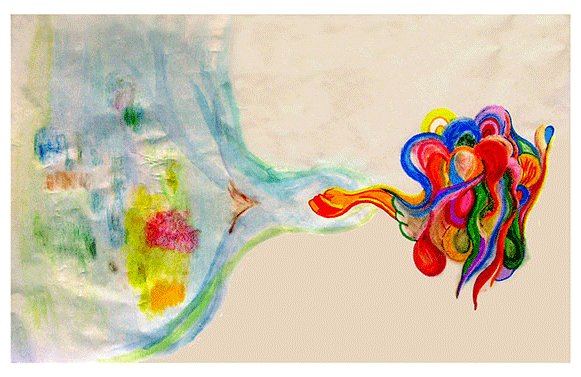Two important paired concepts within Gestalt therapy

Figure and ground
An important conceptual pair within Gestalt therapy is figure-ground. The Danish Gestalt psychologist Edgar Rubin discovered how the experience becomes a carrier of a certain meaning. He discovered that we organize our sensations in a structure where some things constitute a foreground or figure and something else the background or ground. A pattern is formed hereby where something of the gestalt or figure appears in front of us as the true against a ground of something we do not pay any particular attention to. This helps us to create meaning of all the various information we are affected by. The German-American gestalt psychologist Kurt Lewin found that as long as the information is not gestalted (sorted) into figure-ground; the organism is plagued by a lack of equilibrium or a state of tension. The sorting progress will then commence. The confusing or incoherent elements will be sorted into a pattern with the important as a figure and the less important as (back)ground, whereby the state of tension is neutralized.
You do not, however, find meaning in either figure or ground, but in the sorting and organizing of the gestalt – in relation to figure and ground. The Danish author and gestalt therapist Hanne Hostrup poses that, that which makes it possible for us to meet the world in a way that gives us what we need, is our ability to organize, affect and summarize it into a holistic experience.
Here and now
The aspect of time is part of the work within gestalt therapy. It is of utmost importance that the client becomes aware of the level of being able to be here and now, and that she receives guidance in practicing this form of being. As it stands, we are only able to exist here and now, the past has passed and we are no longer able to change it, and the future is not yet here. Often memories or old patterns of reactions merge with the actual experience and it becomes important to be aware of what is here and now and what is colored or affected by the past.
The more a person is capable of being here and now; the more aware and approachable she is. The client is confronted by the fact that the past is a memory that you can talk about and, if needed, work with in real time. It is of particular importance to work with memories that hinder the client from being fully present in the now. Memories should not, however, be used as a substitute-now, by which the client can explain why life is unbearable now and in the future. Used in this way, the memory of the past hinders the experience of what goes on between the past and the future, that is the now.
If you wish to practice being more present and approachable, here and now, you can consciously choose to dwell in the Outer- or Inner Zone. This does not entail that the past is insignificant, or that it is bad to plan for the future. The important aspect is to hold the various time concepts and levels of awareness apart from each other so that I live in the now against the ground of the past and with a view of the future. You can read more about this in the next article.
Text and illustrations: Tine Sylvest
Photographs: Bo Mellberg
The author is a certified Psychotherapist, Art Therapist and Workplace Counselor/Coach born in Denmark, currently living and practicing in the Swedish-speaking parts of Finland.
Next page : The three zones of awareness
